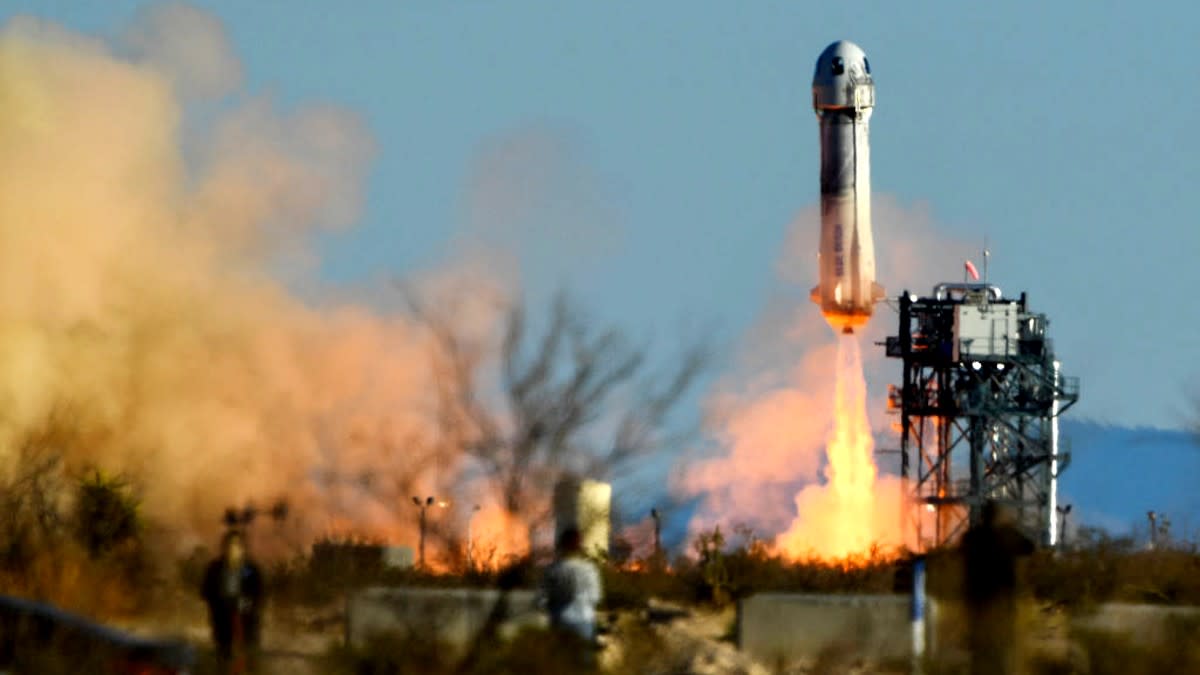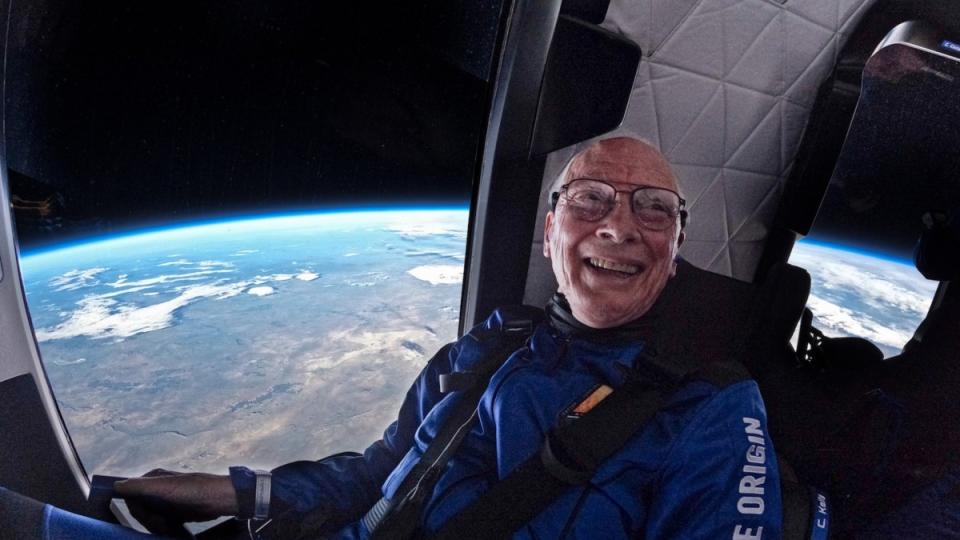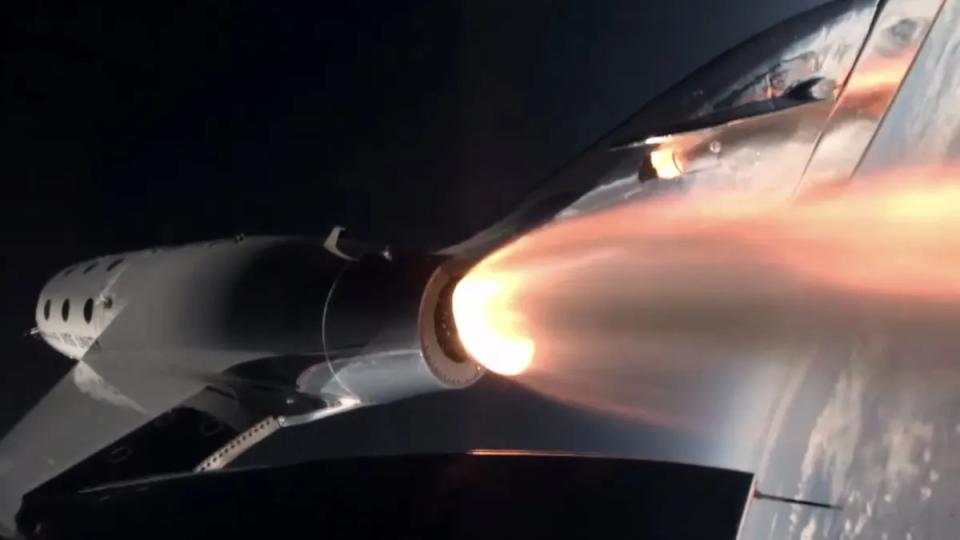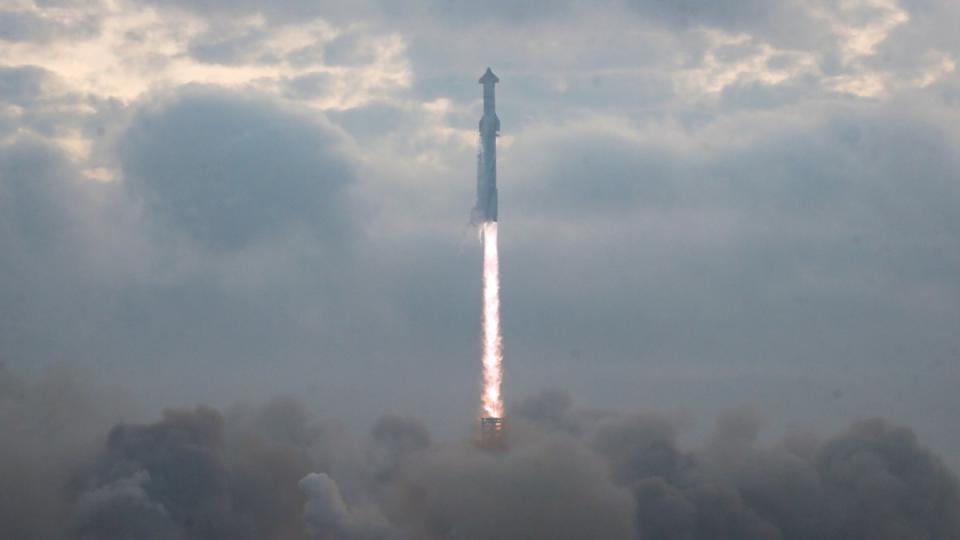The Billionaire Space Race Is About to Heat Up Again—Here’s What You Need to Know

- Oops!Something went wrong.Please try again later.
Blue Origin announced that it will be launching a rocket this Sunday, ending a nearly two-year drought. The space tourism firm hasn’t held a crewed suborbital mission since its NS-22 flight in August 2022. A month after that event, during an uncrewed flight, its New Shepard spacecraft disengaged itself from the rocket mid-flight. The capsule parachuted safely back to Earth.
A “thermo-structural failure” on the rocket’s BE-3PM engine nozzle was blamed for the malfunction. After 15 months, Blue Origin returned in December 2023 with its uncrewed NS-24 mission.
More from Robb Report
SpaceX Just Unveiled the High-Tech Space Suits for the Polaris Dawn Mission
SpaceX's Starship Rocket Just Had Its Most Successful Test Flight Yet
The World's Largest New Tourist Spacecraft Is Swankier Than Your Favorite Cocktail Lounge
The company is offering both research and space-tourism suborbital missions that fly to about 100 kilometers above the Earth to the Karman line, which many scientists call the edge of space. At that point, the crew experiences a few minutes of weightlessness before the capsule drops back to the company’s launch facility in Van Horn, Texas. The flight and space experience lasts about 10 minutes.

This mission’s crew is as eclectic as previous flights. It includes Ed Dwight, 90, who in 1961 became the U.S.’s first-ever black astronaut candidate; venture capitalist Mason Angel; Sylvain Chiron, the founder of French craft brewery Brasserie Mont Blanc; entrepreneur Kenneth L. Hess; retired accountant Carol Schaller; and pilot and aviator Gopi Thotakura.
Blue Origin’s resumption of commercial flights—rumored to cost anywhere between $200,000 and the $28 million one civilian astronaut supposedly paid for the initial flight—means the space race between Jeff Bezos’s company and Richard Branson’s Virgin Galactic is finally getting serious.
Sort of.

Virgin Galactic says it will be launching its seventh commercial flight aboard its supersonic aircraft VSS Unity on June 7. Unity will be tethered to a larger mothership, Eve. The two aircraft take off together and separate at 45,000 feet, at which point Unity heads skywards. This would be Virgin Atlantic’s seventh space-tourism flight after it officially launched its commercial flight program last year. It flew an earlier mission on January 26.
June 7’s full crew roster has yet to be released, though Turkish astronaut Tuva Atasever will be on the flight doing suborbital research, according to Axiom Space, a company that has facilitated trips for other scientists to the International Space Station. The other space tourists on the June 7 flight will include two Americans and an Italian.
But there won’t be the highly anticipated leapfrogging between Virgin Galactic and Blue Origin that observers expected after Branson and Bezos both flew in their respective spacecraft in the summer of 2021.
June’s flight will be the last for VSS Unity, effectively mothballing Virgin Galactic’s commercial program until 2026. The company is developing two new Delta-class spaceplanes which, if all goes according to plan, should be doing hundreds of suborbital flights, as opposed to a half-dozen, in two years. Virgin Galactic plans to fly 125 flights per year going forward, putting 750 tourists (a seat on the aircraft now costs $450,000) into space. At that point, the company Branson founded 20 years ago will be making money for the first time.

Several weeks ago, SpaceX seemed to officially declare itself open for space tourism business by adding a page to its website that described four missions that citizen astronauts could sign up for, even including an email address humanspaceflight@spacex.com. (But the “Join a Mission” button on the page goes nowhere.) The company has accommodated private civilian missions before, but this is the first time SpaceX has floated the possibility to the public.
Elon Musk’s company, which went from plucky startup to the dominant force in commercial space transport, showed diagrams of its two spaceship types, the Dragon and much larger Starship, also noting four possible missions. They include a three- to six-day Earth orbit later this year aboard the Dragon. A 10-day trip for four to the International Space Station will be available as early as 2025.
The 7-day moon mission, 240,000 miles from Earth, doesn’t have a launch date yet. But the website noted it could carry up to 12 passengers in their own suites, presumably aboard Starship. The flight to Mars would involve traveling 140 million miles away from the planet. It didn’t give any information about costs or dates, though it did note that gravity on Mars is 38 percent of that of Earth’s, and a day there is 24 hours, 37 minutes.
Three years ago, many observers forecasted the race to space among the three billionaires would be a slugfest at this point, but technical failures and modifications for all three have tempered expectations, showing that space travel will not be as seamless as proponents expected.
Still, Sunday’s projected flight shows that the race is still on. It just may be more marathon than sprint between the three space-tourism companies.
Best of Robb Report
Sign up for Robb Report's Newsletter. For the latest news, follow us on Facebook, Twitter, and Instagram.


